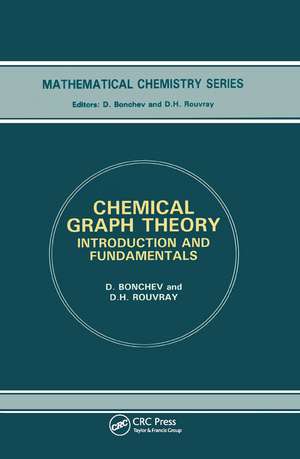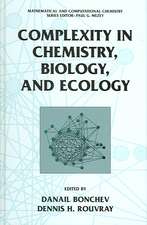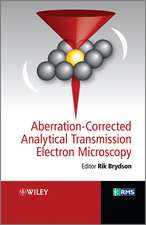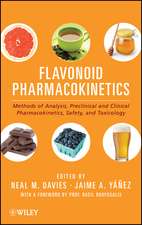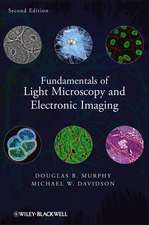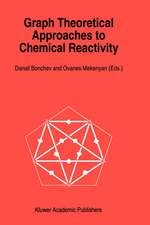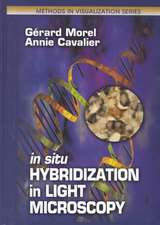Chemical Graph Theory: Introduction and Fundamentals
Autor D Boncheven Limba Engleză Paperback – 18 dec 2020
| Toate formatele și edițiile | Preț | Express |
|---|---|---|
| Paperback (1) | 460.56 lei 43-57 zile | |
| CRC Press – 18 dec 2020 | 460.56 lei 43-57 zile | |
| Hardback (1) | 2883.72 lei 43-57 zile | |
| CRC Press – 1991 | 2883.72 lei 43-57 zile |
Preț: 460.56 lei
Preț vechi: 541.84 lei
-15% Nou
Puncte Express: 691
Preț estimativ în valută:
88.14€ • 91.50$ • 73.49£
88.14€ • 91.50$ • 73.49£
Carte tipărită la comandă
Livrare economică 24 martie-07 aprilie
Preluare comenzi: 021 569.72.76
Specificații
ISBN-13: 9780367450700
ISBN-10: 0367450704
Pagini: 300
Dimensiuni: 152 x 229 x 20 mm
Greutate: 0.44 kg
Ediția:1
Editura: CRC Press
Colecția Routledge
ISBN-10: 0367450704
Pagini: 300
Dimensiuni: 152 x 229 x 20 mm
Greutate: 0.44 kg
Ediția:1
Editura: CRC Press
Colecția Routledge
Public țintă
ProfessionalCuprins
1. THE ORIGINS OF CHEMICAL GRAPH THEORY/Dennis H. Rouvray -- 1. Introduction -- 2. The first Use of Chemical Graphs -- 3. The Emergence of Structure Theory -- 4. The Concept of Valence -- 5. The Growth of Chemical Graph Theory -- 6. Isomer Enumeration Techniques -- 7. Early Additivity Studies -- 8. The Introduction of Topological Indices -- 9. Elementary Bonding Theory -- 10. Conclusion -- 11. References -- 2. ELEMENTS OF GRAPH THEORY FOR CHEMISTS/Oskar E. Polansky -- 1. What is a Graph and What Kinds of Graph Exist? -- 2. Some Graph-theoretical Terms -- 3. Connectedness of Graphs -- 4. Partitioning of a Graph -- 5. Planarity of Graphs -- 6. Line Graphs -- 7. Operations on Graphs -- 8. The Autolllorphism Group of a Graph -- 9. Matrix Representation and Eigenvalue Problems of Undirected Graphs -- 10. The Matrix Representation of Digraphs -- 11. Distances in Graphs and Digraphs -- 12. Metric and Topological Spaces for Simple Graphs -- 13. Graphs in Quantum Chemistry -- 14. Weighted Graphs -- 15. Bibliography -- Acknowledgment -- 3. NOMENCLATURE OF CHEMICAL COMPOUNDS/Alan L. Goodson -- 1. Introduction -- 2. Development of Chemical Nomenclature -- 3. Development of Olemical Line Notations -- 4. Development of Graph Theory -- 5. Application of Graph Theory Olemical Nomenclature -- 6. Summary -- 7. References and Notes -- 4. POLYNOMIALS IN GRAPH THEORY/Ivan Gutman -- 1. Why Polynomials in Graph Theory? -- 2. On Olemical Applications of Graphic Polynomials -- 3. Polynomials -- 4. The Characteristic Polynomial -- 5. The Matching Polynomial -- 6. More Graphic Polynomials -- 7. References -- 5. ENUMERATION OF ISOMERS/Alexandru T. Balaban -- 1. Introduction -- 2. Definitions and Mathematical Background -- 3. Historical -- 4. Polya 's Theorem -- s. Generalized Polya Theorem -- 6. Ruch's Double Coset Formalism -- 7. De Bruijn-Harary-Palmer Power Group Theory -- 8. Valence Isomers -- 9. Polyhexes -- 10. Diamond Hydrocarbons and Staggered Alkane Rotamers -- 11. Diastereomeric Annulenes -- 12. Isomers and Compucer Programs for Their Generation -- 13. Isomerism and Reaction Graphs -- 14. Conclusion -- References -- 6 GRAPH THEORY AND MOLECULAR ORBITALS/Nenad TrlnajstiC -- 1. Introduction -- 2. Elements of Graph Spe:cttal Theory -- 3. The Essence of Hilckel Theory -- 4. Isomorphism of Hilckel Theory and Graph Spe:cttal Theory -- s. The Spectrum of a Hilckel Graph -- 6. The Number Non-bonding Molecular Orbitals -- 7. Totalx-Electton Energy -- 8. Topological Resonance Energy -- 9. Concluding Remarks -- 10. References -- INDEX.
Recenzii
"'...The owner of this book will be in possession of a handy reference for graph theoretical terminology.'."
–Journal of the American Chemical Society
–Journal of the American Chemical Society
Descriere
This volume presents the fundamentals of graph theory and discusses specific chemical applications, providing a historical setting for the current interest in chemical graph theory and a background of the basic ideas and mathematical formalism of graph theory.
